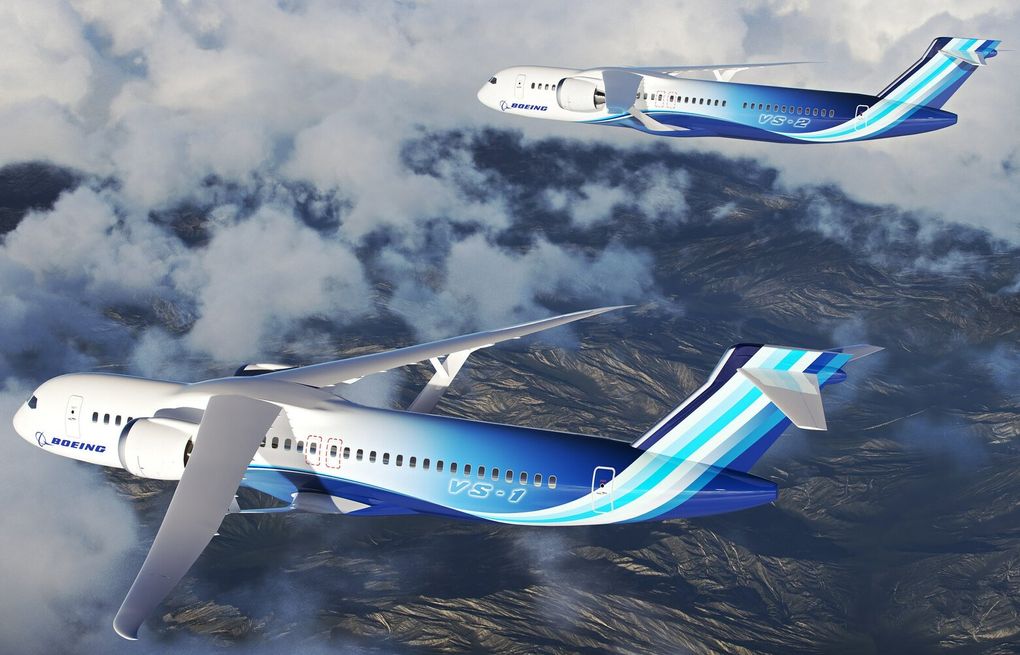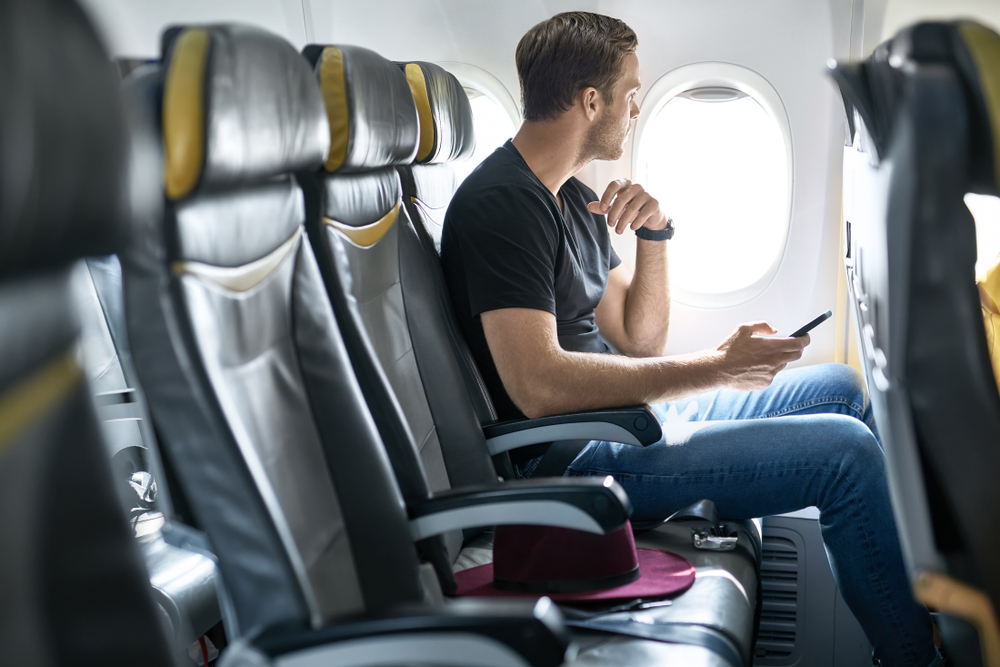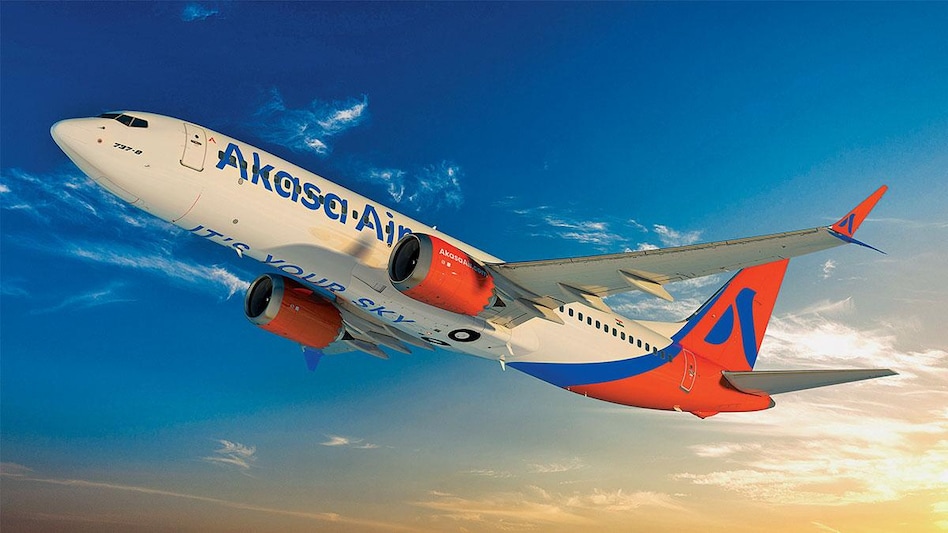Why Flying In India’s Planes Is Pocket Burning For Common Man: Is It An Effect Of Duopoly In India Aviation Industry?
Airfares in India remain unregulated, but the government has occasionally interfered when they have risen, such as after the floods in Srinagar and Kerala.

Praful Patel was taken off guard by an unprecedented spike in airfares as the winter frost had yet to settle in Delhi’s air. It was 2010, and Indian airlines had raised their rates significantly ahead of the peak Diwali season in India. Passengers were outraged, and the opposition quickly seized on the matter. Patel, as Union Civil Aviation Minister, was obliged to intervene.
The minister regarded the pro-private sector and had good friendships with Jet Airways promoter Naresh Goyal and Kingfisher Airlines founder Vijay Mallya, who promptly ‘hauled up’ airlines for charging high tickets.

According to a government official in India who was present at the high-level conference organised by Patel at the time to handle the controversy, he advised them not to go beyond, especially on metro routes, and not to charge more than INR20,000 for tickets. Airlines instantly agreed.
A similar conclusion was predicted earlier this month when current aviation minister Jyotiraditya Scindia convened a conference of top executives from Indian airlines to address a public uproar over high prices. However, fares did not decline this time.
Airfares in India remain unregulated, but the government has occasionally interfered when they have risen, such as after the floods in Srinagar and Kerala.
In contrast, the Indian aviation government had advised airlines not to sell cheap tickets during the epidemic to safeguard lesser carriers from being crushed under the weight of cash-rich firms like IndiGo. Passengers ended up footing the price to keep weak airlines viable during the epidemic, with tickets remaining high for over two years.
But why did the airlines disregard the aviation ministry’s recommendations this time? What has altered? More crucially, is India’s aviation business going back two decades after Air Deccan ushered in a budget-airline revolution by dethroning Air India, Jet Airways, and Air Sahara?
After Nusli Wadia’s Go First declared bankruptcy in May of this year, airfares on several routes, including metros, skyrocketed. With two big airlines controlling 87% of the market, industry analysts and stakeholders are concerned that India’s aviation business is on the verge of cartelization.
While IndiGo has a 61% market share, the Tata-owned Air India group controls 26% of the country’s aviation business. The near-duopoly might herald a new age of sky-high airfares.

According to former Air India chairman Rohit Nandan, currently based in Lucknow, a duopoly is similar to a monopoly. It will begin determining fares over time. From the perspective of a passenger, this is a precarious position.
As two significant businesses virtually control one of the world’s fastest-growing aviation sectors, the future years might be difficult for budget-conscious Indian air travellers. And the anguish is already palpable.
There are few choices if one must fly on a low-cost airline. SpiceJet, for example, does not travel to Lucknow. Go First has since ceased operations. Where is the option? Nandan points out that we must fly IndiGo.
Even on more frequent metro routes such as Delhi-Mumbai, tickets for a next-day IndiGo flight they frequently soared to INR 19,000 in the peak months of May and June, while Air India and Vistara were reported charging anything between INR 19,000 and INR 27,000.
While Scindia claimed that fares had decreased by 60% due to his intervention, the Congress-led opposition criticised that claim as based on selective statistics.
Airlines were dragging their heels for a different purpose, according to a senior airline executive who attended the conference. Airfares would fall nevertheless by late June when the prime summer season finishes with the arrival of the southwest monsoons, signalling the start of a historically weak quarter owing to low demand.
While this is accurate and has provided some respite to passengers, airlines’ apparent unwillingness to comply with the aviation ministry’s request might indicate that the government no longer wields as much power as it once did.
Manet Paes, a former Indian Airlines managing director headquartered in Gurugram, believes it may be several things, including lip service. If you want airlines to do anything, you should be well-versed. The ministry is simply proposing with no evidence to back it up. Praful Patel was quiet at those talks, but airlines knew he was serious.

Of course, Patel might request that Air India operate its huge Boeing 747s on the Delhi-Mumbai route at reduced costs, forcing commercial airlines to drop ticket prices. Even when prices skyrocketed when Kingfisher Airlines was grounded in the summer of 2012, Air India helped bring them back down to earth by selling its tickets much lower.
However, while incumbents strive to fill the void left by Go First’s grounding, Air India’s control no longer rests with Rajiv Gandhi Bhawan, which houses the civil aviation ministry, albeit state-owned Alliance Air may always wet lease jets to deploy.
There are currently just two key players remaining. Why would Air India, now owned by Tatas, listen to the aviation ministry? A government official asked, recalling how, during the Srinagar floods, the Directorate General of Civil Aviation (DGCA) told airline executives at IndiGo, SpiceJet, and Go First to come to the regulator’s office and open their reservation systems and monitor fares to ensure passengers were not inconvenienced.
Former Air India chairman Nandan believes that while privatising Air India was a laudable initiative, authorities should have considered the consequences of such a consolidation. He says he doesn’t understand the government’s eagerness to approve the Air India-Vistara merger, leaving the market with only one full-service airline.
It’s worth recalling that when Etihad purchased a 24% share in Jet Airways in 2013, rivals like Air India complained to the Competition Commission of India (CCI) that the deal would establish a monopoly on routes like Abu Dhabi.
The CCI should examine the case since it protects businesses and citizens. According to Nandan, the government should not intervene in flight pricing; it must strike a balance and determine what should be done.
Following the introduction of low-cost airlines, worldwide airfares have plummeted during the previous few decades. While legacy airlines include all ticket price fees, cancellation fees, luggage costs, meals, and so on, budget airlines do not. This increased the value of choice, allowing them to recoup their entire expenditures. Tickets are ordered quickly; additional luggage and a window or aisle seat cost more. All of this was accomplished using algorithms.
So, is there anything terrible about a free-market pricing system?
Unfortunately, not entirely, according to Hitesh Patel, a founding member of JetBlue Airways and former executive vice president of Kingfisher Airlines located in New York. He reminds out that while IndiGo has a solid domestic market share and Air India is a distant competitor, their positions are flipped in overseas markets.
Unregulated, this condition might result in absurd price increases. In addition, the base price might be raised at the airline’s discretion to balance extra costs. A perfect combination of monitoring and a free-market economy would be ideal. Unfortunately, he argues, this concept does not account for ordinary greed.

Meanwhile, Paes believes that the government should establish an institutional framework under the DGCA and charge it with developing an algorithm that considers expenses, route length, yields, and other factors.
It doesn’t have to be perfect, just suggestive. He adds that the committee should monitor if airlines are limiting flights and not conducting planned flights to obtain higher charges.
What matters is not whether last-minute tickets are high but whether airlines raise advanced fares, dramatically increasing their yields.
If airlines are generating supernormal profits, the DGCA must consider the customers’ interests because they are gaming the system, according to Paes, who adds that the government should investigate whether there is cartelisation and take appropriate action.
Dinesh Keskar, former senior vice-president of sales in Asia-Pacific and India at Boeing Commercial Aeroplanes in Los Angeles, believes that the aviation ministry should keep out of airfare control. He points out that airfares in the United States increased after the epidemic, causing a similar outcry, and the government has been discussing how to address it.
Americans, confined to their houses for lengthy periods due to the epidemic, were eager to pay any price to travel. However, prices plummeted 13% in May compared to the previous month, indicating that the wanderlust has finally subsided.
The market will handle it. If airlines continue to raise their rates, they will begin flying at 60%-70% capacity, according to Keskar, referring to India’s aviation sector, now operating at a record capacity of 90%.
Another senior airline executive, who did not want to be identified, believes that the aviation ministry should instead encourage and prioritise any proposal to bring planes on a wet lease (with aircraft and crew) to help fill short-term domestic capacity gaps while expediting new airline licences.
The existing two-airline system in India is uncommon and unheard of anywhere else.
India is in an unusual position. The nearest competitor is Lion Air, which has taken 60% of the market share from Garuda Indonesia. However, the country does not have a large population. If you search elsewhere, you will not find this type of difficulty. As a result, India will have to deal with its problem, says Keskar, who adds as an afterthought that the existing composition is unlikely to alter very soon.
It is unlikely to change for a long time. Once in that position, IndiGo is challenging to beat. The 500-plane deal will cement its lead over Air India, he claimed.
While Air India has said that it intends to enhance its market share, it may do so at the expense of smaller businesses, thus squeezing them. The airline expects to add roughly 50 planes by March 2024, many of which would be for local flights, while IndiGo expects to add another 20 new Airbus jets. Akasa Air, which Rakesh Jhunjhunwala finances, also wants to add eight planes by March next year, bringing its fleet to about 27 aircraft, although it has opted not to go all-in on leased jets to capitalise on Go First’s demise.
According to insiders, Akasa believes it was not designed to absorb the increased demand caused by the absence of a single player. As a result, it does not wish to add 40 planes to its fleet in a year, like SpiceJet did, only to regret it later. At the Paris Air Show, the airline bought four jets after learning that another Boeing client had opted not to take possession of them. Beginning in January, it will add one rush to its fleet every month until its existing 76-plane order is depleted.

Will Akasa be able to make an impact with 19 planes and nearly a 5% market share?
It’s doubtful. Because even if the market develops from 700 to 1,000-1,200 planes and yearly passenger volume climbs from 144 million to 260 million in 2027, Akasa will still have 76 jets. IndiGo will be the leading player, with a fleet of over 350 aircraft, including dozens of wide-body jets significantly more expensive than IndiGo’s narrow-body planes.
This contrasts other markets with many carriers, such as the United States and China. According to data compiled by the US Department of Transportation, the top four airlines in the US transport approximately 60% of passenger traffic.
IndiGo alone has that much market share in India. Furthermore, in the United States, the four airlines have about identical market shares, but in India, the Air India group has less than half of IndiGo’s stake.
Similarly, China has a 600 million-strong domestic market served by nine major airlines, the largest of which are Air China, China Southern Airlines, and Eastern Airlines, with 400-600-plane fleets and the remainder with 100-300 planes apiece.
So the question is, how many airlines India requires?
Both JetBlue’s Patel and Indian Airlines’ Paes agree that India could do with five mainstream airlines and some regional players but that India must respect international conventions and avoid recent Go First-style blunders in which global lessors were unable to take away their planes because, despite having signed international agreements, local bankruptcy law protects airlines from having to return planes even if they default on payments.
Another airline executive believes that the current two-player dominance in India’s aviation business would result in fewer catastrophic airline failures this decade.
While Patel successfully lowered costs during the 2010 Diwali season, the next festival season may see another steep increase in flight ticket prices, followed by a similar surge in the following summer season, which also coincides with India’s general elections.
While passengers must settle for lip treatment once more, airline stockholders may be in for a profit. According to an expert who follows IndiGo closely, the airline might make a record profit of INR 2,000 crore to INR 2,500 crore in the April-June quarter. This would be the highest daily figure since the company’s founding in 2005, at INR 30 crore.
Conclusion.
The introduction of low-cost airlines during the previous few decades has decreased worldwide airfares. However, a concentration of market dominance between two large businesses in India is terrible news for air passengers, and peak season ticket costs have already skyrocketed. Can the aviation ministry achieve a delicate balance between regulation and free market pricing?




